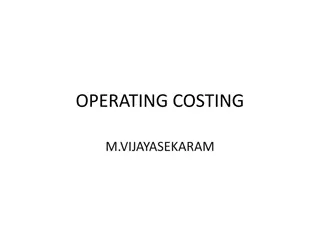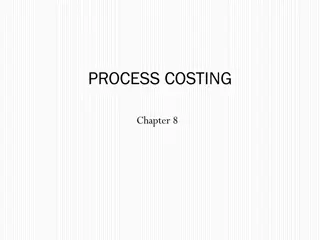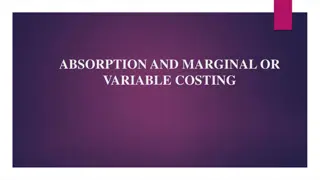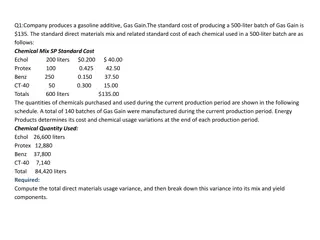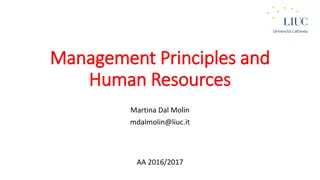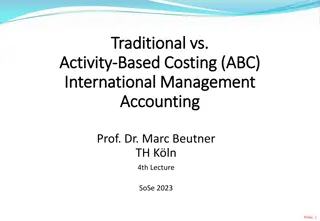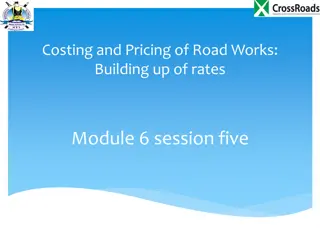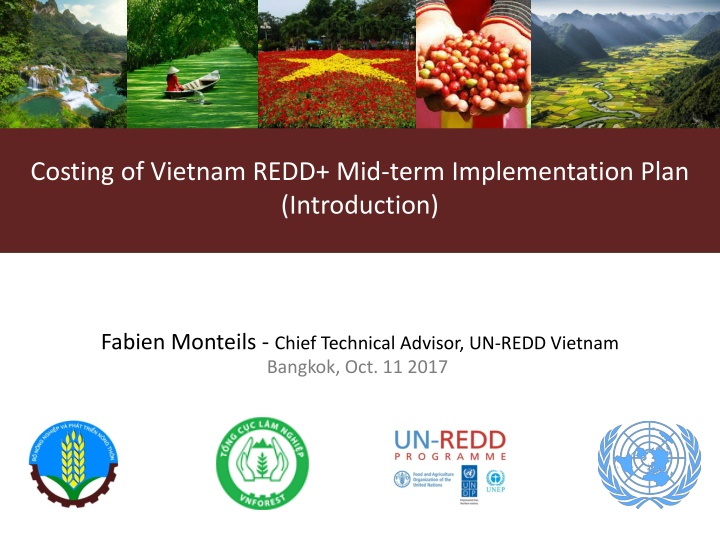
Costing of Vietnam REDD+ Mid-term Implementation Plan Overview
Explore the costing aspects of the Vietnam REDD+ mid-term implementation plan, focusing on translating strategies into investment plans, evaluating costs and benefits, and packaging activities into programmes to enhance natural forest protection. Learn about strategies for effective implementation, assessment of socio-economic conditions, and expected outcomes in forest governance and livelihood improvement.
Download Presentation

Please find below an Image/Link to download the presentation.
The content on the website is provided AS IS for your information and personal use only. It may not be sold, licensed, or shared on other websites without obtaining consent from the author. If you encounter any issues during the download, it is possible that the publisher has removed the file from their server.
You are allowed to download the files provided on this website for personal or commercial use, subject to the condition that they are used lawfully. All files are the property of their respective owners.
The content on the website is provided AS IS for your information and personal use only. It may not be sold, licensed, or shared on other websites without obtaining consent from the author.
E N D
Presentation Transcript
Costing of Vietnam REDD+ Mid-term Implementation Plan (Introduction) Fabien Monteils - Chief Technical Advisor, UN-REDD Vietnam Bangkok, Oct. 11 2017
Costing REDD+ implementation... towards economic evaluation Key challenge: effective implementation of plans and policies 1 Translating a strategy (NRAP) based on policies and measures into an investment plan based on programmes (NRIP) Reorganize/repackage activities Quantify targets and associated volume of activities Detail concrete action plans consistent with quantified targets 2 Evaluate costs, and benefits when relevant (including on measures developed through social and environmental risks and benefits screening, and provisions for monitoring and evaluation system)
Packaging activities into Programmes Illustration: PAM 1.3 & 2.2 - Natural forest protection & enhancement Assessment at the national level Assessment of key DD hotspots and potential area for enhancement (including thresholds etc.) Assessment of socio-economic conditions (incl. drivers), LU rights in keys areas (with PPC participation) Assessment of current/past relevant initiatives developed and main lessons Development of a strategy to implement pilots / replicate initiatives Implementation at the local level Strategies: f (LU status) CPC forest area : Allocations to HH & Ind Others area : Collaborative mgt models f (use/incentives) Development of business models (NFTPs) PFES and/or livelihoods improvement measures Expected outcomes : Protection and enhancement of Natural Forests
Packaging activities into Programmes Illustration: PAM 1.3 & 2.2 - Natural forest protection & enhancement P8 Development and implementation of effective models for natural forest protection and enhancement Ref Description Undertake an assessment of current socio-economic dynamics in key hot spots of deforestation, forest degradation and potential areas for forest carbon enhancement in order to design integrated livelihoods and local forest governance programme Support development and replication of associate/ collaborative models for management of natural forests between the forest owner (state organizations), local communities and other stakeholders in the area - Review forest and forest land areas, notably areas under management by CPC, and allocate forest and forest land to the people, giving priority to individuals and households, particularly to ethnic minorities, lacking land and productive land. Objectives Lead Timeline Analysis report and strategy for improved forest governance and livelihoods in key hot spots 1.3a MARD 2017-2018 1.3b (1) - At least 10 models of associate/collaborative management of natural forest piloted PPC 2017-2020 1.3b (3) Forest and forest land areas allocated increased PPC 2017-2020 NRAP PAMs Implement programmes to support employment and livelihood improvement for the local people living near and in the forest in hotspots of deforestation and forest degradation Increased access to opportunities of employment and livelihood improvement through vocational training and appropriate incentive 1.3b (4) MARD 2017-2020 - 2,2MHa of natural forest in hot spots protected - 200,000 ha of special use and protection forest enhanced - 400,000 ha of natural production forest enhanced Evaluate and replicate effective models for the promotion of natural forest protection and regeneration 2.2a MARD 2017-2020 - At least 8 business models piloted and documented through inclusive and participatory processes along supply chains - Forums for dialogue and sectors feasibility and opportunity assessment - Regulation and guidelines developed and piloted Undertake study and pilot cooperation between forest owners, local people and private sectors on business models contributing to forest protection and forest conservation, through NTFPs and other forest environmental services. 2.2b MARD 2017-2020
Costing Costing of an investment programme is based on related the action plan marginal cost to make an action happen Ex: turning 1ha from short-term to long-term rotation will be costed on the basis of the cost of backstopping actions (training, connecting, producing data, building value chain ) but will not reflect the work force of the beneficiary Two major types of activities to cost Studies, consultation and dialogue processes, technical backstopping Estimate the work load and use external consultancy rates (national or international as deemed necessary) In practice, actual cost can be lowered (synergies, internal options ) Field activities Estimate potential costs for implementing an activity by using ratios per ha, number of beneficiaries, output unit usually based on observed costs from existing/past projects If not available, need to break down activities and consolidate costs by inputs
Illustration Illustration: Programme 14 PAM2.3.a Component 3: Strategic dialogue and capacity-building activities on private and financial sectors engagement and green credit for REDD+ Estimated costs (B.VND) Financial Instrument Activity Hypothesis 1 National Expert (green credit) for 60 man.days; Infography works for 3 knowledge products; 4 national workshops; 600 knowledge products printed Based on components 1 and 2, develop knowledge products and capacity building activities for the whole financial sector. 3.1 Grant 1.54 Organize dialogue between the private sector, financial sector and government to improve enabling conditions for REDD+- aligned businesses and their access to finance Two national experts (senior/junior) for 3 years; 30 technical meetings; 4 national workshops; Travels (including for participation to workshops); Communication 3.2 Grant 8.8
Evaluating benefits Opportunity to evaluate financial and economic performance (including returns/benefits) from some interventions Helps determining operational budget and financial needs of agents expected to invest in or incentivize actions Multiple benefits including social and environmental can be considered in the economic analysis. Need to adapt the scope and method to the objective (business, incentive?) and data availability. Examples from ER-Programme: Estimating the benefit of land allocation through the value of red books and land titles ($160/ha/year), collaborative management approach Reflecting mangrove value of $280/ha/year (fish value) instead of $4.200/ha/year (economic value capturing all services ) Compare costs between baseline & REDD+ models Calculate annual cash flow, net present value and return rate Evaluate benefits and annualize
Illustrations Do not forget Economic evaluation does not replace political leadership and commitment





